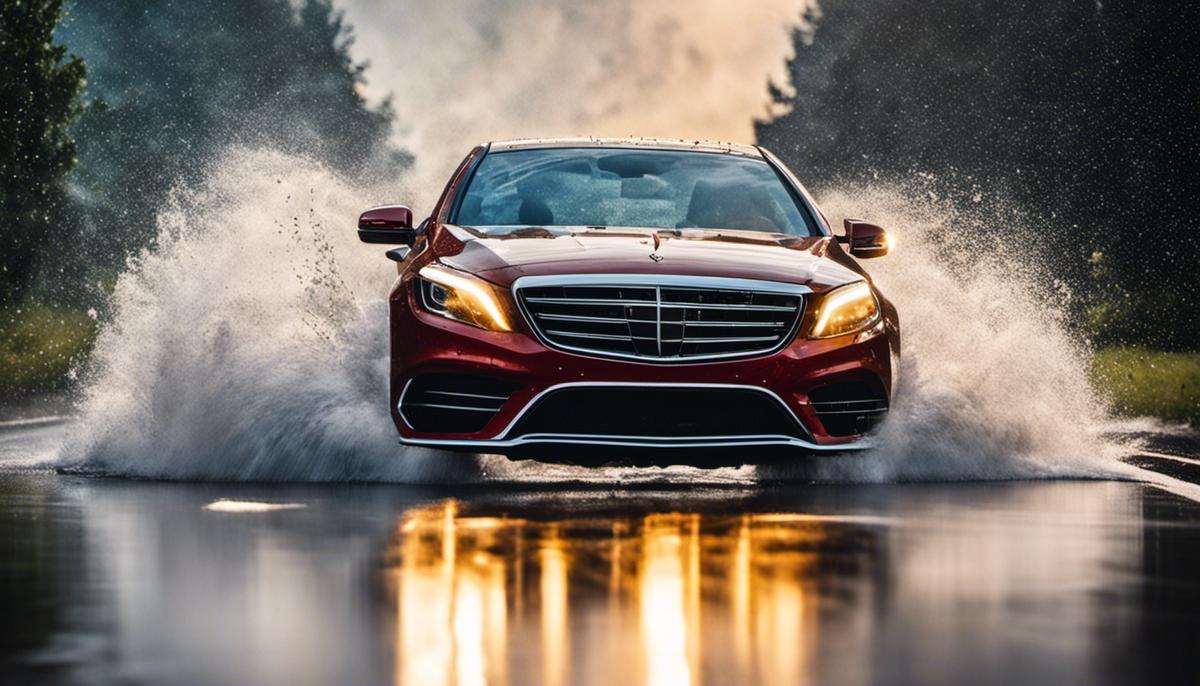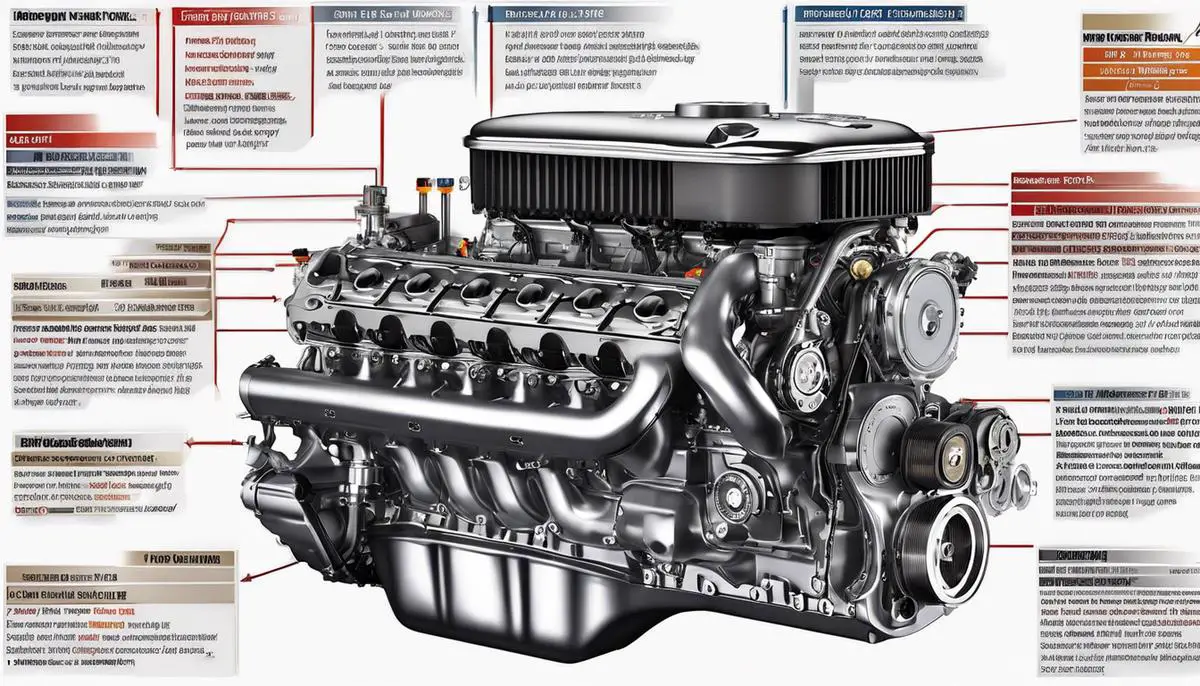Picture this – you’re behind the wheel, cruising smoothly on a rain-drenched highway. Without warning, your vehicle suddenly loses its grip on the road, skidding uncontrollably across the slick surface. This is an instance of hydroplaning, a critical phenomenon experienced by countless drivers worldwide during severe weather conditions. Gaining a comprehensive understanding of hydroplaning and how car design principles work towards mitigating its risks can potentially maneuver you out of danger’s way. Subsequently, exploring the modern technologies embedded in automotive design to combat hydroplaning and gazing beyond towards the future of vehicular advancements can unearth a wealth of knowledge for the safety-oriented motorist.
Contents
Understanding Hydroplaning
If you’re a seasoned auto enthusiast or a novice just starting to dip your toes into the world of motorsport, you’ve probably heard whispers, or possibly even shouts, about the infamous hydroplaning. It’s a term that sends a jolt of excitement or maybe dread through the hearts of many in the hobby, but what really is hydroplaning? Why is it such a big deal, and why does it send seasoned drivers into a panic?
Dive into the deep end with us as we unravel this mysterious phenomenon.
Hydroplaning, better known in the auto world as aquaplaning, is downright aqua-horrifying for many drivers, and rightly so. It is a condition where tires lose contact, not with dear ones, but with the road surface, leaving the vehicle skimming absurdly across a layer of water. Imagine a water skier who glides on the water surface without sinking, and you’ve roughly got the idea. Sounds adventurous? Yes. But also dangerous? Absolutely.
The crux of the matter lies in the delicate balance that every driver tries to maintain between speed, tire tread, and water depth on the road. With rain or, if you’re unlucky enough, snowfall, the road surface gets wet, making it a treacherous terrain at unsuitable speeds. A vehicle speeding on a water-logged surface can cause tires to literally float on the water layer, resulting in hydroplaning. This hobby of ours, beloved and adrenaline-pumping as it is, also has its fair share of challenges and hydroplaning is one of the big ones.
This brings us to another million-dollar question: how fast is too fast?
There’s reason not to skirt around the point: even at speeds as low as 35 mph, vehicles can hydroplane. Yes, you read it right. But don’t let this fact keep you away from wet adventures. It takes as much as .012 inches of water and the right speed to land you in a hydroplaning situation. With knowledge and precautions up the sleeve, there’s a way past this nemesis.
Being aware of road conditions, understanding the vehicle, and maintaining suitable speeds can all contribute significantly in keeping hydroplaning at bay. Knights in shining armor, here, are the tires. Tread pattern, tread depth, and inflation levels in tires influence their hydroplaning-resisting capabilities. Regular inspection and tire maintenance, therefore, is a safety mantra that no auto-hobbyist should forget.
To put it simply, hydroplaning can turn your vehicle into an uncontrolled sled on the road. But with the right knowledge and precautions, it can be just another hurdle to speed past in our exciting journey of chasing thrill on wheels. After all, isn’t overcoming challenges what this hobby’s all about? So, buckle up, drive safe, and let not the fear of hydroplaning dampen the thrill of driving in rain.
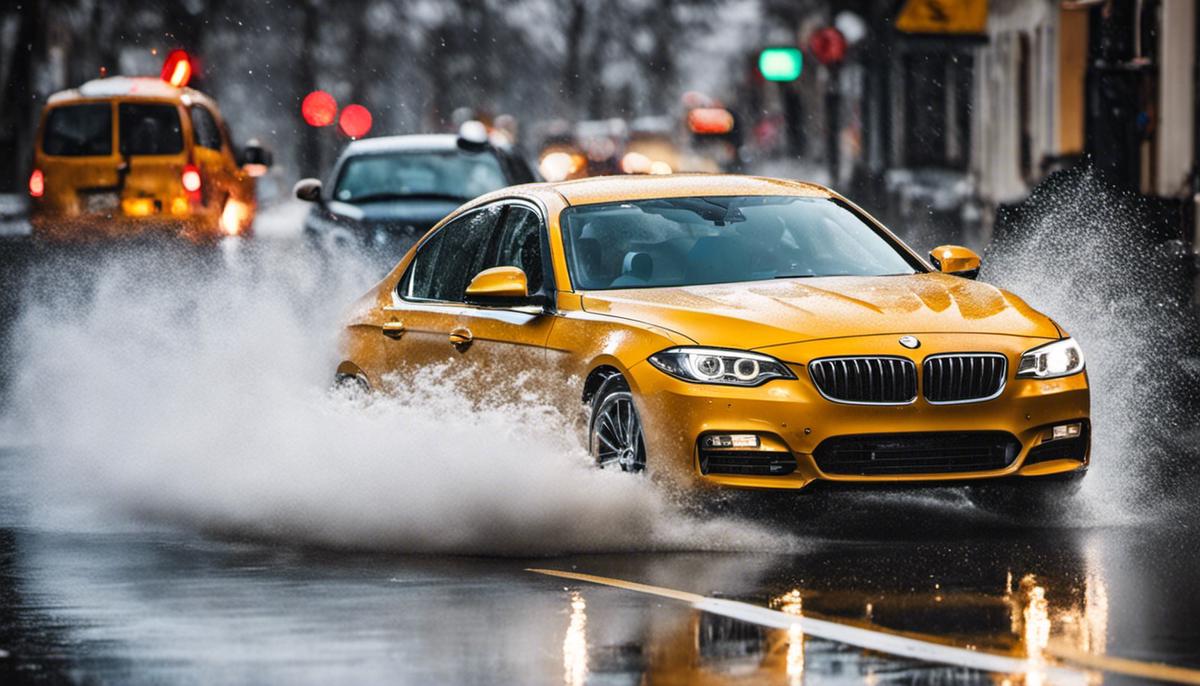
Car Design Principles Related to Hydroplaning
Creating the Perfect Anti-Hydroplaning Machine: The Art of Car Design
Art or science? When it comes to car design, it’s a spectacular blend of both. The thought, effort, and precision that go into ensuring that a vehicle will not just look aesthetically pleasing, or speed like a bullet, but also be safe on adverse road conditions is nothing short of remarkable. And when it comes to tackling the issue of hydroplaning, traditional car design principles meticulously step up to the plate with ingenious solutions.
Utilizing Aerodynamics
One of the main design factors attributable to mitigating hydroplaning is aerodynamics. Designers and engineers keep this factor at the forefront during the conceptualization stages. A car with excellent aerodynamic design will experience less lift – a key component of hydroplaning. This is achieved by designing the vehicle to have a lower center of gravity, along with smoother surfaces underneath the car. These features reduce the air resistance and ensure that the vehicle maintains stronger contact with the road surface, significantly reducing hydroplane risk.
Employing Anti-Lock Brakes & Electronic Stability Control
Yes, you guessed it; these brilliant tech integrations in car designs also curb hydroplaning dangers significantly. Anti-lock brakes prevent wheel lock-up, thus retaining tractive contact with the road surface. On the other hand, electronic stability control (ESC) can detect and reduce the loss of traction, another hydroplaning factor. The combination of these two does a fantastic job in counteracting hydroplaning.
Engaging Lower Gear Ratios
Traditional car designs opt for lower gear ratios especially in adverse driving conditions to ensure better traction. Being in a lower gear places more torque (rotational force) onto the wheels. This increased force allows the tires to better grip the road, ultimately reducing the risk of hydroplaning.
Consideration of Weight Distribution
The placement of weight throughout a car can greatly impact the propensity for hydroplaning. Traditional car designs aim for an even distribution of weight to ensure an equal force is being placed on each tire, enhancing traction. This careful balancing act reduces the likelihood of hydroplaning.
Implementing Innovative Tire Designs
Tire manufacturers and car designers work hand-in-hand to combat hydroplaning. Design principles involve the development of tires with deep tread channels. These channels are specifically designed to guide water away from the tire, increasing traction and reducing hydroplaning. High-quality rubber compounds also play a pivotal role in providing optimum grip in wet conditions.
Designing cars to combat hydroplaning is no small feat. Balancing aesthetics, performance, comfort, and above all, safety is a tidily complex process that traditional car design principles have perfected over the years. It is through these multifaceted efforts that the nightmare of hydroplaning becomes a more manageable risk. So, as you go on to admire and enjoy your automotive hobby, remember that each element of car design serves a purpose, especially in keeping your rubber where it should be – on the road!
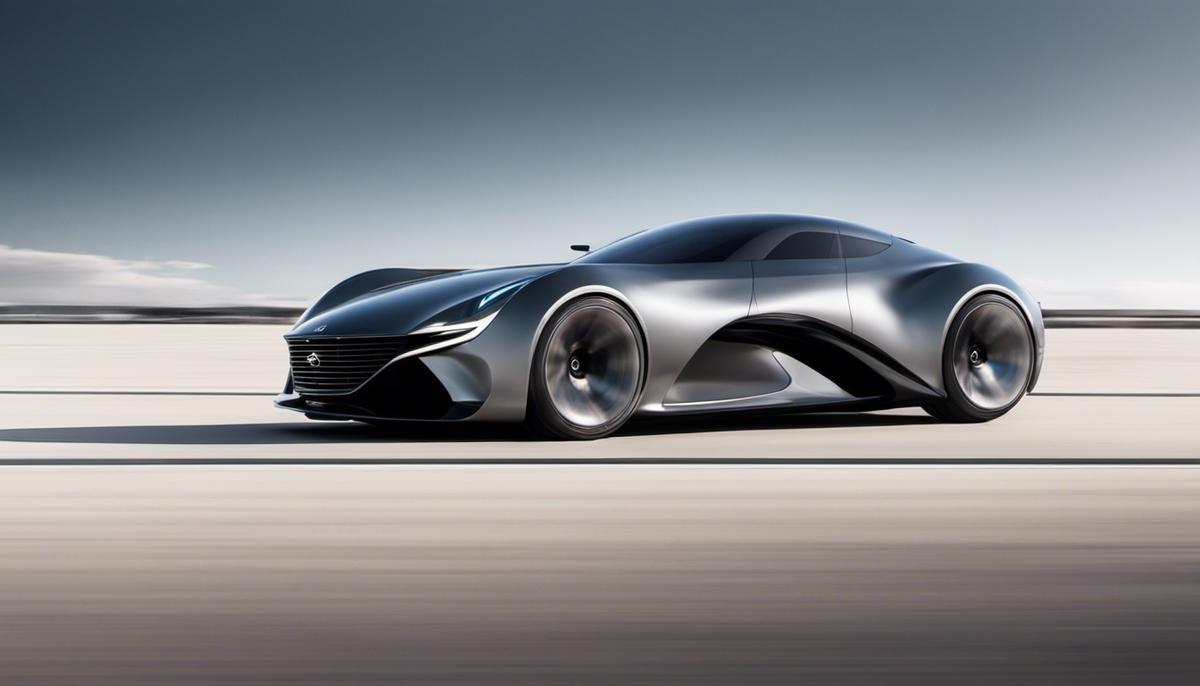
Advanced Technologies in Cars to Counter Hydroplaning
Delving deeper, aerodynamics play a significant part in hydroplaning prevention. A vehicle’s shape and construction can substantially influence how water interacts with it during motion. For example, automakers engineer underbody panels to guide airflow, reducing turbulence that could lift a car into a hydroplane. Whereas, rear diffusers are installed on many sporting vehicles to produce downforce, thereby boosting tire grip and stymieing hydroplaning before it has a chance to start.
Anti-lock brakes (ABS) and electronic stability control (ESC), while not new technologies, are continually being refined to battle hydroplaning. ABS prevent wheels from locking and causing uncontrolled skids while ESC monitors wheel speed and direction. If it detects loss of steering control, ESC can reduce engine power or apply braking to individual wheels, helping regain control swiftly. Both systems are lifesavers during bouts of unexpected hydroplaning, making those slick surfaces less intimidating.
Geared up as we are about anti-lock brakes and stability control systems, it’s critical also to appreciate the benefits of lower gear ratios. Shifting to a lower gear can increase traction when driving in adverse conditions. By doing so, power transfers slowly to the wheels, reducing the likelihood of tire spin and subsequent hydroplane potential.
Did you know that the weight of car parts can influence hydroplaning? You may think more weight equals more tire contact, and less risk of hydroplaning. However, it’s not as straightforward. Automakers consider weight distribution, especially in performance and racing vehicles. Extra weight at the rear tires, commonly achieved through rear-mounted engines or battery packs in electric vehicles, can enhance traction, assisting in hydroplaning prevention.
Innovation in tire design has seen companies striving for new ways to increase safety. Developments such as wide circumferential grooves and speed-sensitive valves can force out more water from under the tire, minimizing the risk of hydroplaning. Some manufacturers incorporate connected rain grooves to further enhance water dispersion.
With all being said, it’s vital to remember that automakers must approach car design holistically. A low, race car-like body may be aerodynamic but may be uncomfortable for standard road driving. A high-powered car with a rear-mounted engine may be a blast, but it requires skillful handling. The most effective designs merge aesthetics, performance, comfort, and safety, creating vehicles that can meet everyday needs and combat unexpected dangers, like hydroplaning.
Undeniably, hydroplaning poses a real challenge on the road. Armed with knowledge and driving a car equipped with these ingenious features, one can feel safer and continue enjoying the thrill of the drive, even when faced with less-than-perfect weather conditions. Here’s to holding the road with all the impressive innovations engineered at our disposal! Enjoy the drive!
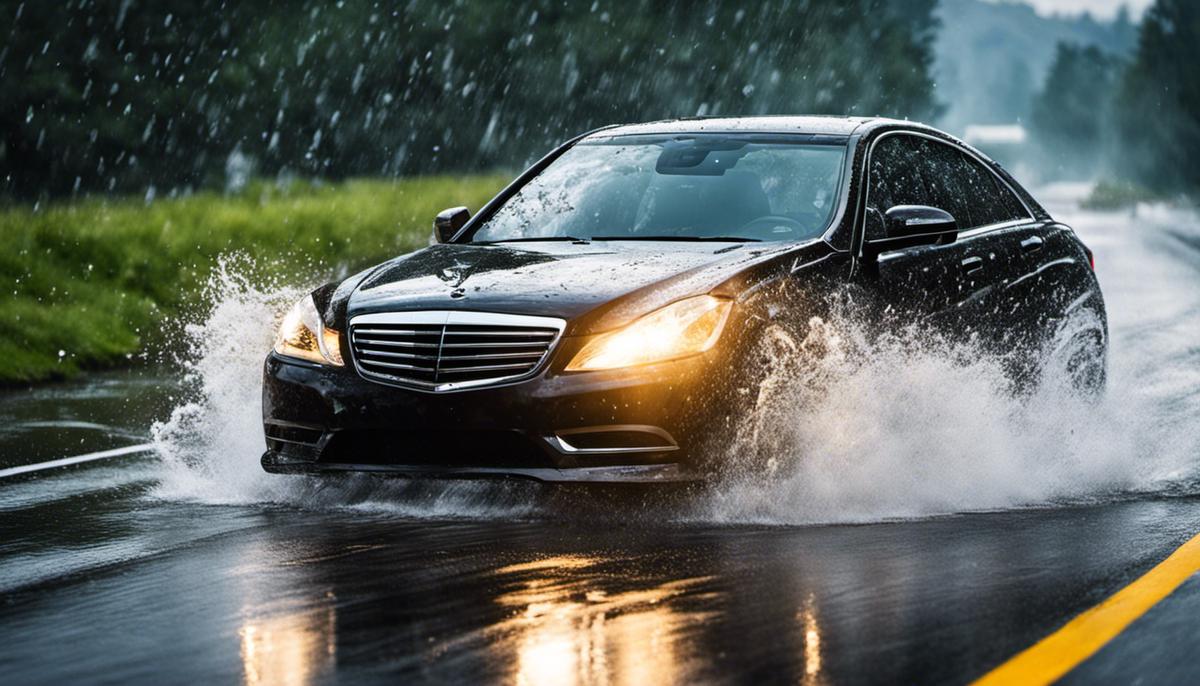
The Future of Car Design and Hydroplaning
Harnessing the Power of Design: The Road Ahead for Hydroplaning Prevention
In the world of automotive craftsmanship, aerodynamics play an essential role not just for speed and fuel efficiency, but for safety as well. How so? By helping to prevent hydroplaning. How, you ask? Through the lower pressure created by the flow of air underneath the vehicle. This generates lift, which, if not controlled, can lead to a vehicle losing tire traction and hydroplaning on wet roads. Many companies forward-thinking engineers and designers are meeting this challenge with the latest underbody panels to guide air smoothly and reduce turbulence. Yet another deceptively simple innovation making our roads safer one car at a time.
Concurrently, design adjustments to the rear of vehicles can also be a game-changer. Employing rear diffusers – those cool, aggressive-looking vents you see on sports cars – are designed to channel airflow and create downforce, which increases tire grip and stability. Safer driving conditions in the rain? Now that’s something to get excited about!
Then there’s the ongoing refinement in braking technology. Anti-lock brakes (ABS) and Electronic Stability Control (ESC) systems continue to evolve, helping drivers maintain control of their vehicles during dangerous situations, such as hydroplaning. These systems work by preventing wheel lockup, thereby allowing the vehicle to maintain tractable contact with the road surface.
Additionally, the utilization of lower gear ratios offers improved traction in adverse driving conditions. In layman’s terms, lower gears give the tires more grip to claw their way through challenging weather, making the car less likely to hydroplane.
Even the impact of weight distribution in a car cannot be ignored when it comes to hydroplaning. Vehicles with a more balanced weight distribution are generally less likely to hydroplane, as the weight is more evenly shared among all tires, increasing overall traction. Isn’t physics just beautiful?
Of course, we can’t forget about the tires themselves. They are, after all, the only part of the car that actually touches the road. Tire manufacturers around the globe are consistently testing new tread patterns and compounds to close the gap on hydroplaning. The results? Recent advancements in tread designs that rapidly channel water away from the tire surface, thereby increasing the contact patch and grip.
The ongoing challenge for car designers, however, lies in balancing aesthetics, performance, comfort, and safety. Each of these attributes plays a vital role in the overall appeal of a vehicle. It’s an unparalleled juggling act that requires mastering the art of compromise to produce vehicles that not only look and perform well, but also provide a secure and comfortable driving experience.
But with the ever-evolving world of technology and automobile design, the future is bright. The severity and risk of hydroplaning continue to decline as leading experts and automobile companies pool their knowledge and resources towards creating safer, more efficient vehicles for everyone.
Throughout this journey of exploration, the common truth remains: knowledge is power. By keeping abreast of vehicle technologies and condition-specific preventative measures, every driver can boost their confidence and competence behind the wheel, no matter what Mother Nature has in store. Safe travels, fellow enthusiasts!

The realm of automotive design and technology is ceaselessly evolving, pushing the thresholds of what is feasible to enhance the safety and efficiency of contemporary vehicles. As we look forward to innovative car designs and heightened technological integrations, it is crystal clear that hydroplaning has had, and will continue to have, a significant influence on their evolution. The ultimate aim is to make hydroplaning a relic of the past, a hurdle deftly circumvented courtesy of cutting-edge tread designs, proactive vehicle response systems, and the progressive strides towards wholly automated driving.
